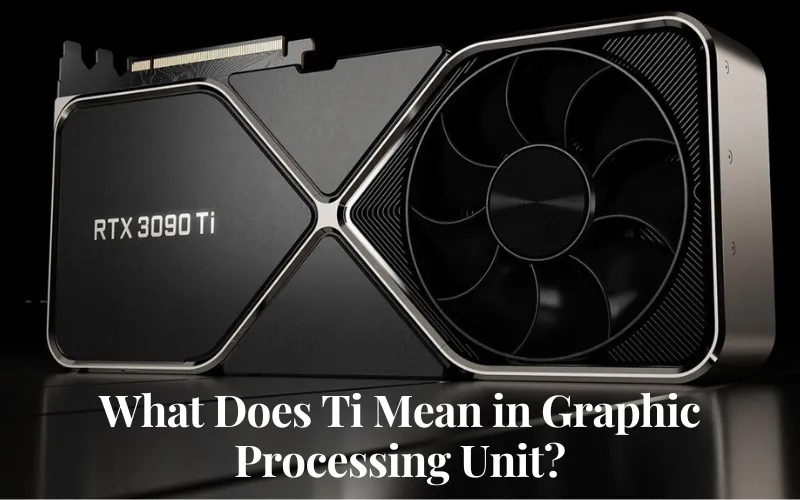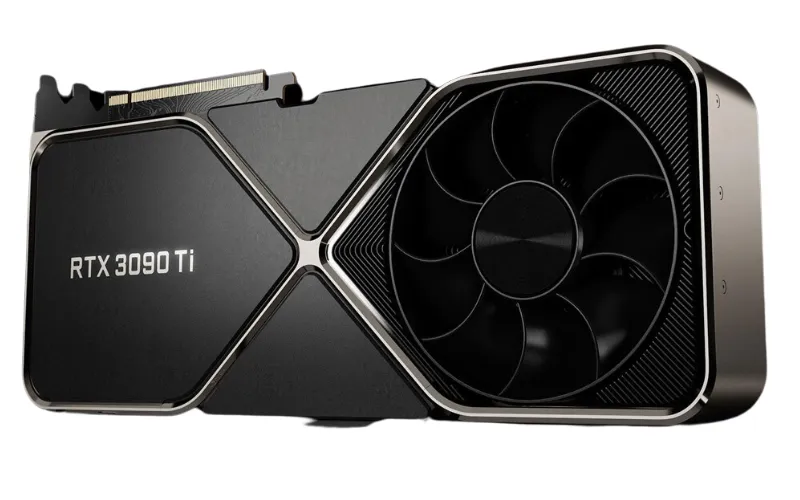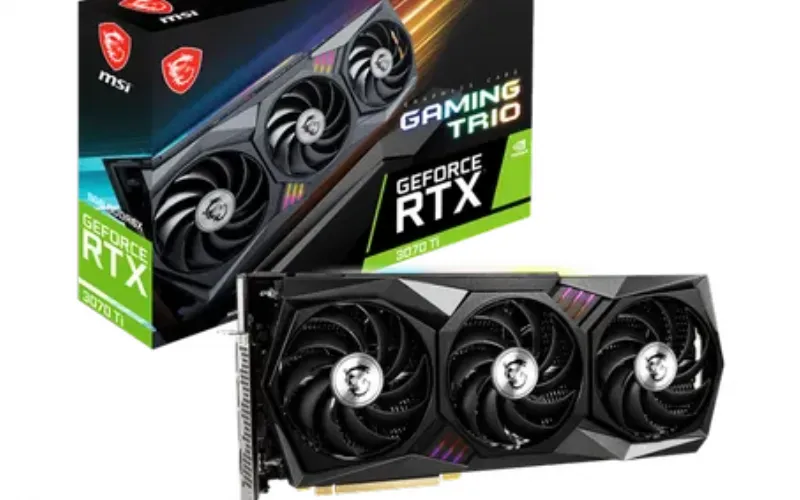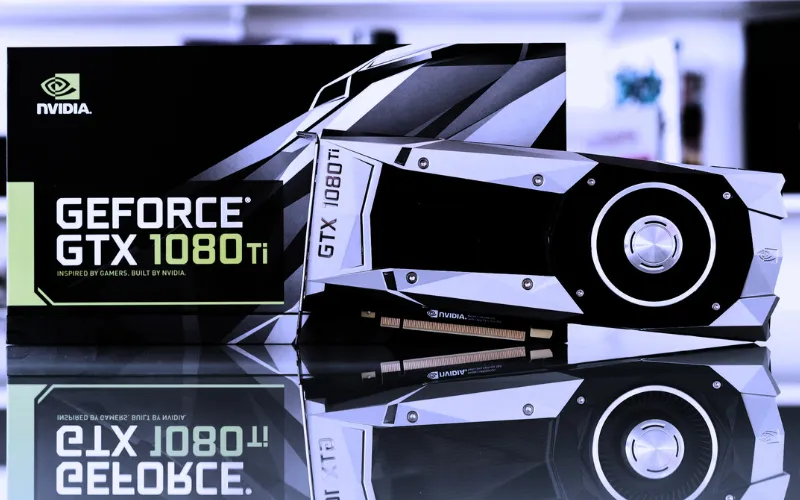When navigating the world of graphics cards, the various model names and suffixes can be a significant point of confusion. Among the most common questions is the distinction between NVIDIA’s “Ti” and “non-Ti” GPUs. Understanding this difference is crucial for any user looking to optimize their PC for gaming, content creation, or professional applications, ensuring they select a component that aligns with their performance goals and budget.
This comprehensive guide provides an objective, fact-based analysis of the NVIDIA Ti vs. non-Ti debate. We will explore the technical specifications, real-world performance implications, and key factors to consider, empowering you to make an informed decision for your next system build or upgrade.
NVIDIA Ti vs. Non-Ti: Core Specification Comparison
At a glance, the most effective way to understand the distinction between Ti and non-Ti models is to compare their core specifications directly. The “Ti” version of a card is a more powerful iteration of the base model within the same numerical series. This power increase is achieved through enhancements to key hardware components. The table below illustrates these differences using popular examples from past NVIDIA generations.
| Specification | GeForce RTX 3070 | GeForce RTX 3070 Ti | GeForce RTX 3090 | GeForce RTX 3090 Ti | GeForce GTX 1080 | GeForce GTX 1080 Ti |
| GPU Architecture | Ampere | Ampere | Ampere | Ampere | Pascal | Pascal |
| CUDA Cores | 5,888 | 6,144 | 10,496 | 10,752 | 2,560 | 3,584 |
| Boost Clock | 1.73 GHz | 1.77 GHz | 1.70 GHz | 1.86 GHz | 1.73 GHz | 1.58 GHz* |
| Memory Size | 8 GB GDDR6 | 8 GB GDDR6X | 24 GB GDDR6X | 24 GB GDDR6X | 8 GB GDDR5X | 11 GB GDDR5X |
| Memory Interface | 256-bit | 256-bit | 384-bit | 384-bit | 256-bit | 352-bit |
| Memory Bandwidth | 448 GB/s | 608.3 GB/s | 936.2 GB/s | 1008 GB/s | 320 GB/s | 484.4 GB/s |
| TDP | 220W | 290W | 350W | 450W | 180W | 250W |
Note: While the GTX 1080 Ti has a lower official boost clock than the 1080, its vastly increased core count and memory bandwidth result in significantly higher overall performance.
What Does the “Ti” Designation Mean on NVIDIA GPUs?
The “Ti” suffix in NVIDIA’s branding is a simple yet effective indicator of a hierarchical performance step-up. It allows the company to create distinct product tiers within the same GPU family, such as the RTX 3070 and the more powerful RTX 3070 Ti.

The “Titanium” Moniker Explained
“Ti” stands for Titanium. This branding signifies an enhanced version of a standard, or non-Ti, graphics card. A Ti GPU is not made of titanium; rather, the name is a marketing term used to denote a product with superior specifications and, consequently, higher performance capabilities compared to its base model.
Primary Architectural Differences
The performance uplift in Ti models stems from several key architectural improvements over their non-Ti counterparts:
- More CUDA Cores: Compute Unified Device Architecture (CUDA) cores are the parallel processors within an NVIDIA GPU. A higher CUDA core count allows the GPU to handle more calculations simultaneously. This directly translates to better performance in complex tasks like rendering 3D scenes in games and accelerating professional software. For instance, the RTX 3070 Ti features 256 more CUDA cores than the standard RTX 3070.
- Higher Clock Speeds: Clock speed, measured in gigahertz (GHz), determines how quickly the GPU’s cores can process data. Ti models often feature a higher factory boost clock, leading to faster instruction processing.
- Enhanced Memory Systems: A Ti card may feature faster memory types (like the move from GDDR6 to GDDR6X in the 3070 series), a wider memory bus, or simply more VRAM. These upgrades increase memory bandwidth, allowing the GPU to access and process game textures and other large datasets more quickly, which is critical for high-resolution gaming.
Performance Analysis: Ti vs. Non-Ti in Real-World Scenarios
The specification bump in Ti cards is not just theoretical; it delivers tangible benefits in demanding applications, most notably gaming and professional content creation.

Gaming and Frame Rates
For gamers, the primary benefit of a Ti graphics card is higher frame rates (FPS). The additional processing power allows a Ti GPU to render complex scenes more quickly, resulting in smoother gameplay, especially at higher resolutions like 1440p and 4K. This can also provide more headroom for enabling advanced graphical settings, such as real-time ray tracing, without a prohibitive performance drop. The choice between a Ti and non-Ti card can often be the deciding factor in achieving a consistent 60 FPS or higher in the latest titles.
Content Creation and Professional Workloads
The advantages of a Ti GPU extend to professionals who rely on their machines for GPU-accelerated tasks. This includes:
- Video Editing & Rendering: Software like Adobe Premiere Pro and DaVinci Resolve use CUDA cores to accelerate video encoding and rendering times. A higher core count can drastically reduce project export times.
- 3D Modeling & Animation: Applications such as Blender and Autodesk Maya benefit from increased GPU power for viewport rendering and final frame rendering, allowing artists to work more efficiently.
- Scientific Computing & AI: In data science and machine learning, the parallel processing power of GPUs is essential for training complex models. The superior core counts of Ti cards can significantly speed up these computational workloads.
Understanding Related NVIDIA Suffixes: What About “Super”?
In addition to “Ti,” NVIDIA also uses the “Super” suffix. “Super” typically denotes a mid-generation refresh of a card. Historically, a Super version offers a performance increase over the base model but often slots in just below the Ti variant in the product stack.
For example, in the RTX 20-series, the hierarchy was generally: RTX 2080 < RTX 2080 Super < RTX 2080 Ti. The Super card offered a compelling middle ground, providing a noticeable performance uplift from the base model without the premium price of the Ti version.
A Closer Look at Key Ti Graphics Cards
The original request highlighted three specific GPUs that demonstrate the power of the Ti designation across different generations.
NVIDIA GeForce RTX 3090 Ti

As the pinnacle of the Ampere architecture, the RTX 3090 Ti was engineered for users demanding uncompromising performance. With 10,752 CUDA cores and 24 GB of ultra-fast GDDR6X memory on a 384-bit bus, it excels at 4K and even 8K gaming, as well as handling massive datasets for creative and scientific workloads. Its performance comes with a high power requirement, rated at a 450W TDP.
MSI Gaming GeForce RTX 3070 Ti

This partner model of the RTX 3070 Ti represents a popular sweet spot for high-performance gaming. It utilizes the full GA104 GPU with 6,144 CUDA cores and upgrades the memory to faster GDDR6X, providing a significant bandwidth advantage over the standard RTX 3070. This makes it an excellent choice for gamers targeting high-refresh-rate 1440p and entry-level 4K gameplay. Partner cards like MSI’s often include enhanced cooling solutions and factory overclocks for additional performance. For those building a system around this card, pairing it with the best CPU for the RTX 3070 is crucial to avoid bottlenecks.
NVIDIA GeForce GTX 1080 Ti

Even years after its release, the GeForce GTX 1080 Ti is remembered as a legendary GPU for its massive performance leap over the GTX 1080. It increased the CUDA core count by over 1,000 and expanded the memory bus to 352-bit with 11 GB of VRAM. This raw power made it a long-lasting and viable card for 1440p gaming well into the next generation of titles, showcasing the significant long-term value a Ti model can offer.
Key Factors to Consider When Choosing
Deciding between a Ti and a non-Ti GPU comes down to an objective analysis of your specific needs, budget, and existing hardware.
Performance Requirements and Target Resolution
Evaluate the demands of the games or applications you use most. If you are gaming on a 1080p monitor and are satisfied with 60 FPS, a non-Ti card may be entirely sufficient. However, if you are driving a high-refresh-rate 1440p or 4K best Thunderbolt monitor and want to maximize visual settings, the investment in a Ti model becomes much more justifiable.
Budget and Price-to-Performance Ratio
Ti graphics cards carry a premium price tag. The central question is whether the performance increase justifies the additional cost for your use case. Analyze benchmarks for the specific applications you use to determine the FPS or render time improvement. Sometimes, a non-Ti card offers a better price-to-performance ratio for mid-range systems, while the Ti model’s value only becomes apparent at the highest end of performance expectations.
Power Consumption and System Compatibility
The increased power of Ti cards results in higher Thermal Design Power (TDP), meaning they consume more electricity and produce more heat.
- Power Supply: A more powerful GPU requires a robust Power Supply Unit (PSU). Ensure your system’s PSU can handle the increased wattage. Consulting a PSU tier list can help in selecting an appropriate unit.
- Cooling: The extra heat generated must be effectively managed. Your PC case needs adequate airflow to prevent thermal throttling, where the GPU reduces its performance to stay within a safe temperature range. In some cases, exploring solutions like how to watercool a GPU might be necessary for enthusiasts.
- Physical Size: Ti cards, especially high-end models with large coolers, can be physically larger than their non-Ti counterparts. Always check the dimensions of the card against the clearance in your PC case.
Frequently Asked Questions (FAQ)
What does Ti stand for in a GPU?
“Ti” stands for “Titanium.” It is a branding designation used by NVIDIA to signify that a graphics card is a higher-performance version of its base model, featuring more CUDA cores, faster memory, or higher clock speeds.
Are Ti graphics cards always better?
In terms of raw performance, a Ti version is always more powerful than its non-Ti counterpart within the same generation (e.g., RTX 3080 Ti is faster than RTX 3080). However, “better” is subjective and depends on a user’s budget and needs. For some, the price-to-performance ratio of a non-Ti card might be the better value.
What is the difference between a Ti and a Super GPU?
“Ti” traditionally represents the highest performance tier within a specific model number. “Super” is typically a mid-generation refresh that offers a performance boost over the base model, often positioning it between the base and Ti versions.
What are CUDA cores and why do they matter?
CUDA cores are parallel processors in an NVIDIA GPU responsible for handling a wide range of computing tasks. A higher number of CUDA cores allows the GPU to process more data simultaneously, leading to significantly better performance in gaming, 3D rendering, and scientific computations.
Is a Ti card necessary for 1080p or 1440p gaming?
A Ti card is not strictly necessary, especially at 1080p, where many non-Ti cards provide excellent performance. At 1440p, a Ti card becomes more beneficial for maintaining high frame rates with maximum settings. For users asking if PC gaming is worth it, the scalability offered by Ti and non-Ti options is a major advantage.
How does a Ti GPU affect tasks other than gaming?
The increased processing power of a Ti GPU, particularly its higher CUDA core count, significantly accelerates professional tasks. This includes faster rendering times in video editing and 3D animation software, as well as quicker computations in data science and machine learning applications.

Holding a Ph.D. in Computer Science, Dr. Alistair Finch is our chief PC Component Benchmark Analyst. He provides meticulous, data-driven analysis of CPUs and GPUs, moving beyond marketing claims to reveal their true performance. His guides help readers understand the intricate relationship between hardware architecture and real-world gaming frame rates.
